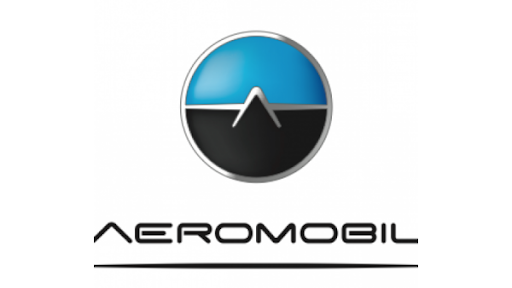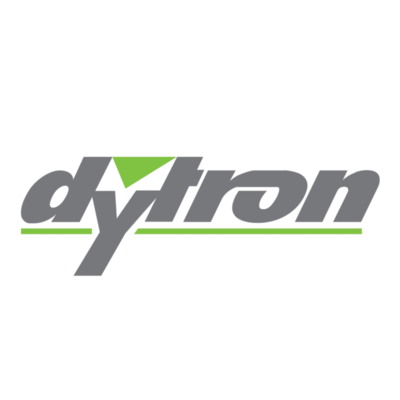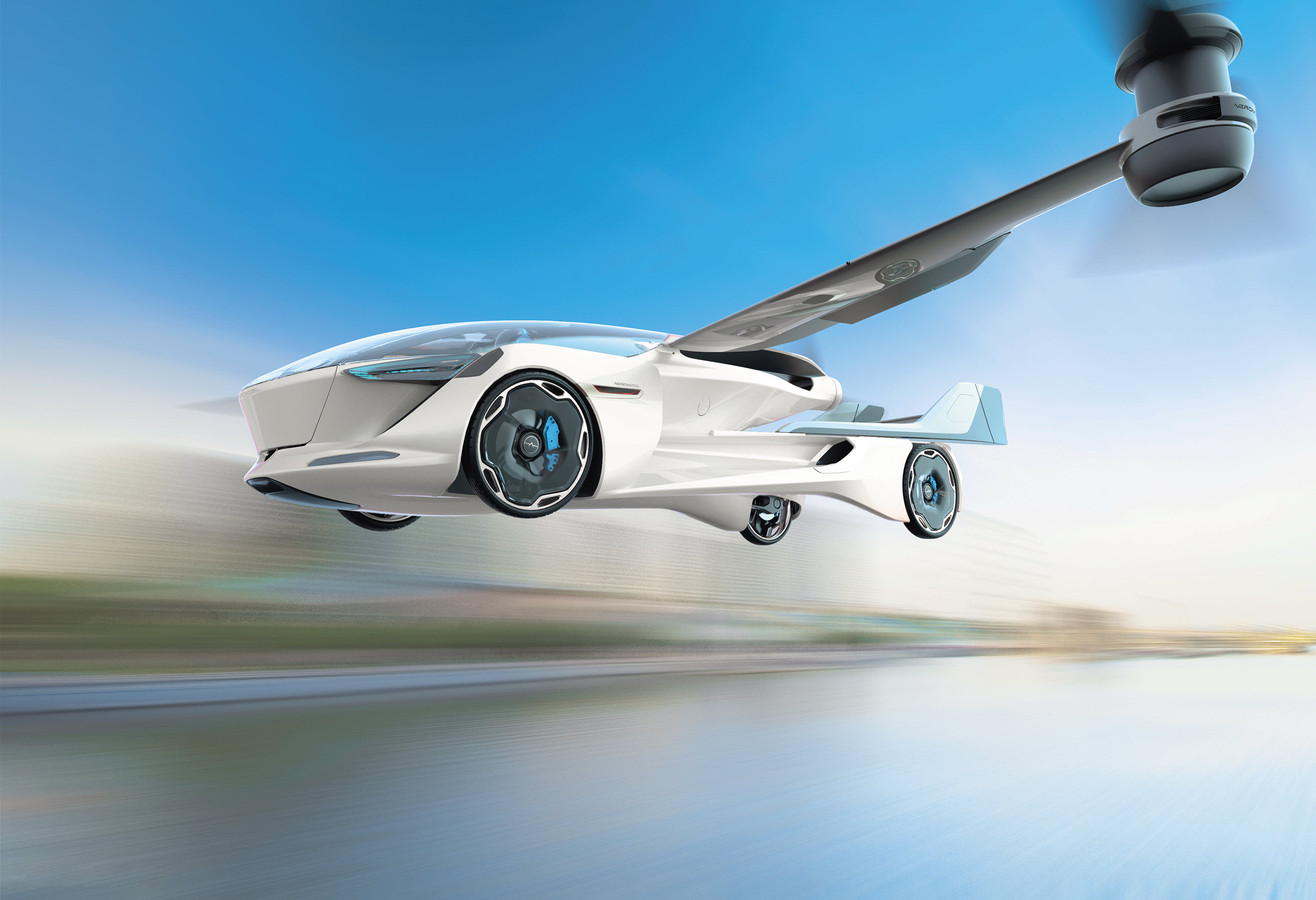Aeromobil
AeroMobil uses Dassault Systèmes’ 3DEXPERIENCE platform not only to manage the lifecycle of its vehicle and to help ensure regulatory compliance but also to find the best design before physical prototyping.
3DEXPERIENCE boosts our ability to be creative. It accelerates our technological progress and lays the foundation for our long-term development.
Inventing new mobility solutions
Traffic is the bane of nearly every driver’s experience. Yet by 2050, the United Nations predicts that 68% of the world’s population will live in urban areas, meaning an additional 2.5 billion people living in cities. With more than 2 billion cars projected on the road by 2035 going from point A to point B will be challenging without alternative mobility solutions. Slovakia-based AeroMobil’s latest invention aims to revolutionize personal transportation with its flying car.
AeroMobil began in 2010 in a small garage. Its first prototype was introduced in 2013 and the company’s newest design (prototype 4.0) is planned for commercialization in 2020. “The idea for this vehicle was to express our passion to travel free of the usual constraints,” said Juraj Vaculik, AeroMobil’s CEO and co-founder. “We are not the first inventors to build a flying car; many have tried throughout the last century. My family and friends thought I was crazy. But with a small team we built our first prototype, which was fully functional on the ground and in the air in 2013. This enabled us to demonstrate that it’s possible. Our prototype attracted international automotive and aerospace experts and advisors from all over the world. One of them joined our company to be a part of our dream. Doug MacAndrew, our CTO gained his impressive automotive experience at Land Rover and MacLaren. Convincing him to come to work for a flying car company in Slovakia was challenging to say the least but our vision and accomplishments spoke for themselves.”
Power to choose
AeroMobil’s goal is to become the world’s leading platform for personal transportation. “We need to solve the world’s mobility challenges,” Vaculik said. “While we are able to move terabytes of data at record speeds, personal transportation is getting slower and slower. We need to imagine threedimensional transportation where the road and the air are combined. We are not just building a single vehicle. We are creating a platform on a technological and strategic level, which is a long-term, strong foundation for new innovations based on our initial vehicle. Ninety percent of our competition is introducing next generation helicopters, electric helicopters, or passenger drones.”
“What differentiates us from other companies building new mobility solutions is that AeroMobil is not only a car, it’s also a plane,” Vaculik said. “We successfully combined the two transportation types based on different use cases and external circumstances. One unique feature is that you can use the AeroMobil in any weather. Most helicopters, small planes, or passenger drones are grounded when the weather is bad. However, with the AeroMobil when there is a thunderstorm you start your trip as a car and once you get past the dangerous conditions, you convert the AeroMobil into a plane and continue your journey. It’s true door-to-door transportation.”
AeroMobil chose Dassault Systèmes’ 3DEXPERIENCE® platform to help it meet its daunting design and certification challenges and to manage the lifecycle of its vehicle. The certification is particularly complex as the vehicle must comply both with automotive and aerospace regulations. “We needed a solution that will help us keep track of a very detailed list of safety and performance requirements,” Doug MacAndrew, CTO at AeroMobil said. “ENOVIA allows us to monitor and measure ourselves against these complex targets. We assign all the appropriate regulations to each component and system, enabling us to remain focused during design, and keep track of how the component must be designed so that the product is ultimately safe to use.”
DYTRON, a Dassault Systèmes’ business partner in Slovakia, assisted AeroMobil with its implementation of the 3DEXPERIENCE platform. “DYTRON is very supportive and constructive. They are keen to help us with this challenge and due to their industry experience, we felt they were the right choice,” said MacAndrew. “While any implementation can represent challenges to a company’s existing processes and status quo, there is a methodology when choosing which part to implement and knowing when it’s good enough to move on to the next phase. We are currently fine-tuning our installation and DYTRON is there every step of the way,” he said.
The customer drives our decision-making process, and the 3DEXPERIENCE platform allows us to digitally imagine and very quickly transform our ideas into reality.
Complex certification requires information sustainability
“The certification process is a very formal process,” Hugues Le Cardinal, head of airworthiness at AeroMobil said. “In the aviation industry it’s a two to three year process that spans throughout the design phase. But our design is subject to special technical requirements from both the aviation and automotive worlds because our vehicle is not a classical airplane. We, therefore, must submit reports and perform flight and ground testing required by the European Aviation Safety Agency to demonstrate compliance.
“Let’s take, for example, the fuel tank”, Le Cardinal continued. “Car regulations are more severe than those imposed by the aviation authorities. So, to demonstrate appropriate safety levels, we used the road requirements and the European Aviation Safety Agency accepted our approach. The 3DEXPERIENCE platform is a good solution to help us ensure compliance because we have all the documents, all the information, the test plans, the test reports, and other related documents secured in one place. Moreover, we have an obligation to store all our archives in the event there is an accident or other incident in the future. We can check back if an event is related to an unsafe design that needs to be modified, so archives are very important. And with the 3DEXPERIENCE platform, we know everything is there.”
Within the 3DEXPERIENCE platform, designers can assign objectives and requirements to each of the components and systems at a very early stage. This provides valuable information to the other departments such as testing, development, finance, or purchasing that play an integral part in the product lifecycle. “As there is traceability, we can make sure that data is clearly demonstrable and we can go back and check before we release a part for production,” MacAndrew said. “It’s important to maintain accurate knowledge of every product we’ve ever made. A lifecycle management solution like the 3DEXPERIENCE platform allows us to do this. We can predict and manage every vehicle and every part that we’ve ever used in an effective and efficient way,” he said.
Digital world helps validate experiences
Customer experience is what drives AeroMobil’s R&D choices and the virtual world helps validate these experiences early. “The customer drives our decision-making process, and the 3DEXPERIENCE platform allows us to digitally imagine the vehicle environment and how the customer will experience this environment. This allows us to very quickly transform our ideas into reality,” said MacAndrew. “And that is especially useful for interior mockups, enabling us to very rapidly design and test a cockpit in a digital world.”
Engineers pay particular attention to the cockpit. “Our challenge when working on interior systems is to fulfill both automotive and aerospace requirements,” Katarina Kamendyova, chief engineer interior systems at AeroMobil said. “With the platform we can keep track of all the requests, like the CS-23 aerospace legislation*.
“We use CATIA for design and its kinematics features are extremely helpful as well,” Kamendyova said, “because engineers can quickly check movable parts to avoid any clashes with their surroundings. The suspension is also complex as it has to be designed to withstand the stresses and loads of an airborne vehicle and to absorb the energy produced by the wheels of a car on the road,” she explained. “With the Dassault Systèmes solutions we’re able to find the best design that meets both requirements.”
With ENOVIA, Kamendyova said, there also is improved collaboration between designers and managers, allowing them to see data in real-time. “Bill of materials (BOM) management also becomes much easier because we can check at any time how many items we are using, which supplier provides that part and all other necessary information related to any particular component.”
“Moreover,” added MacAndrew, “since many of our suppliers are still working with CATIA V5, we can work with V5 since the data is seamlessly managed by the 3DEXPERIENCE platform. We don’t have to deal with migration issues.” Digital simulation enables AeroMobil to create and test eight to 10 different design variants and choose the one or two most pertinent for physical prototyping. “The best thing about CATIA,” Kamendyova said, “is that we are free to design even complex surfaces, anyway we want, it’s that flexible.”
With ENOVIA bill of materials (BOM) management becomes much easier and the best thing about CATIA is that we are free to design even complex surfaces.
Providing more affordable mass market solutions
Although AeroMobil’s first target is the B2C market, it ultimately plans to expand to a mass market approach with its 5.0 version, where people can own the vehicle but also use the company’s mobility service, a more affordable personal transportation solution, according to Vaculik. “People will be using the AeroMobil as a service where they can book a trip and combine, in a very flexible way, the portion of the journey to be done by car and the portion to be done as a plane. It will give them more freedom than any other solution out there,” Vaculik said.
AeroMobil 5.0, which was recently presented to the media, boasts a fully operational VTOL (vertical take-off and landing) capability, compared to the short takeoff and landing operation needed with the 4.0 - and it’s fully electrical. “From a consumer perspective, the 5.0 will not just be a twoseater like the 4.0, but a four-seater, better suited for family trips and other mobility services, opening up B2B market opportunities for AeroMobil. With the AeroMobil 5.0, we can propose more business models like mobility-as-a-service in the sharing economy,” Vaculik explained.
Vaculik believes spending long hours in one’s vehicle is a waste of time. “Personal transportation is in dire need of an overhaul,” he said. “The congestion today is adversely affecting our daily lives. When we consider that the average commuting time is close to four hours in some Asian countries, we can imagine better ways to spend this time. We need to find new mobility solutions to reduce the number of vehicles in urban areas, and better utilize those we have, by inventing new transportation modes. 3DEXPERIENCE boosts our ability to be creative. It accelerates our technological progress and lays the foundation for our long-term development.”

Focus on AeroMobil
Inventor of the AeroMobil flying car.
Products: AeroMobil versions 3.0, 4.0 as well as the 5.0 VTOL electric 4-seater flying taxi concept car
Employees: 50
Headquarters: Bratislava, Slovakia
For more information: www.aeromobil.com

Focus on DYTRON
DYTRON SLOVAKIA Ltd. is a partner of Dassault Systèmes, dedicated to providing PLM (Product Lifecycle Management) and 3D CAD/CAM/CAE solutions in Slovakia for over 19 years. The company provides professional business consulting services, PLM project implementation and integration, technical support, certificated training courses, engineering and development services and professional CAE support for all customers in all industries in Slovakia.



